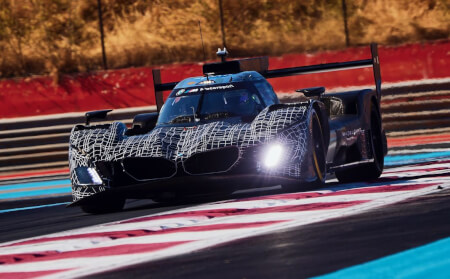August 18th 2025
IMSA Technical Committee lays out changes to BoP for VIR
The IMSA Technical Committee has released a statement, accompanying a Technical Bulletin published today which details sweeping changes to the Balance of Performance for vehicles competing in the GTD PRO and GTD categories.
These changes will go into effect, at least initially, at the Michelin GT Challenge at VIRginia International Raceway.
The Technical Committee statement reads: "The goal of IMSA’s Balance of Performance (BoP) process for GTD and GTD PRO is to maintain performance parity between the fastest GT3 entries across all circuits and race lengths. The unique variety in GT3 machinery – from aerodynamics and bodywork to engine design and placement – produces performance differences that vary from track to track, so the IMSA Technical Committee’s BoP process has been constructed to adjust for these influences by leveraging a common set of tools including torque sensors, wind tunnel data, and simulations.
"Encapsulated in the BoP process are structured calculations that adjust for trends in demonstrated performance over the most recent events. However, the track-to-track influences are significant for GT3 cars and tend to account for the majority of adjustments listed in IMSA’s BoP tables.
"IMSA continues to engage on all BoP matters with IMSA's manufacturer partners in regularly scheduled open forum discussions. These meetings continue to provide our manufacturers with the opportunity to critique the process and provide additional feedback, all of which helps develop and improve the BoP processes. This in turn helps to keep our joint customers informed, ensuring IMSA’s administration of the process is transparent."
This is the first season in which IMSA has mandated the use of magneto-elastic torque sensors in the GT3 vehicles used in GTD and GTD PRO; these sensors are used to gather and monitor powertrain data in real time, and if necessary, administer penalties to teams whose cars exceed the powertrain parameters outlined by the Technical Committee.
Compared to the BoP parameters at Road America, all GT cars have significantly increased maximum stint energy, and the BMW M4 GT3 EVO and Chevrolet Corvette Z06 GT3.R have received minimum weight increases.
All models have received station significant "first stage" horsepower increases (below 190 kilometers per hour), except for the Lamborghini Huracan GT3 EVO2 and Mercedes-AMG GT3 EVO, which received power decreases at that threshold. "Second stage" power output (above 200 kph) has been decreased slightly for the Corvette and Porsche 911 GT3 R, and significantly increased for all other models.
Earlier this year, IMSA made a "manual adjustment" to the Balance of Performance in the GTP category, which boosted the Acura ARX-06 and Cadillac V-Series.R, while attempting to pare back the early advantages of the Porsche 963 and BMW M Hybrid V8.











